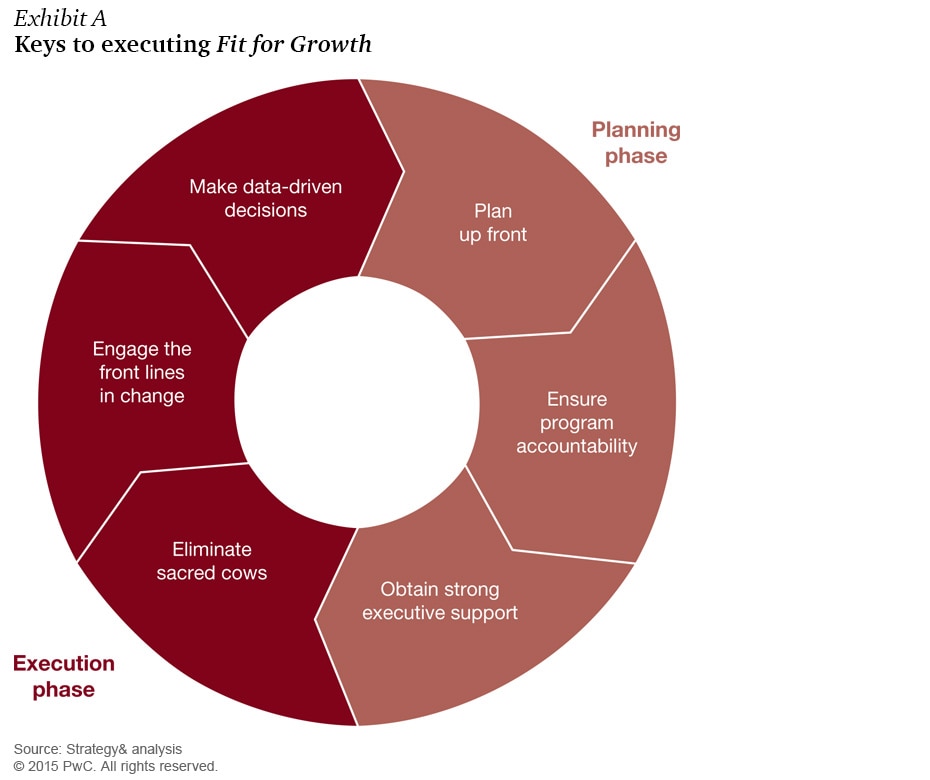Executive summary
U.S. utility companies confront an array of difficult challenges that will make their industry more complex and bring on more disruptions with each coming year. From low demand growth and increased regulatory pressure to emerging technologies, reliability issues, and new generation decisions, these thorny problems must be addressed with new approaches — something that many utilities are simply not prepared for. Breaking away from old business models is essential for utilities to find pathways for profitable growth in a more competitive environment than the industry has ever experienced before.
An approach that we call Fit for Growth* offers a solution. This strategic model provides a series of steps that a utility can take to coherently address significant questions about generation mix, the use of distributed generation, the optimal structure for owning assets, and innovative opportunities for better returns. Once a Fit for Growth program is embedded in an organization on a strategic level, a tactical road map for performance improvement can be implemented that involves developing fresh capabilities, applying intelligent cost discipline, and establishing a targeted growth plan that smartly balances capital investment with realistic returns.
Keys to executing a Fit for Growth strategy
Successfully executing a Fit for Growth initiative requires focus and coordination throughout the organization. Six elements are particularly important for companies to focus on. Each element is equally important during one of the two key stages of the project: planning and execution.
- Plan up front: Effective planning is imperative for project success. The more details that can be provided before a project starts — including tactical approach, company support requirements, communications and employee engagement protocols, and decision rights — the higher likelihood of success. Failure to think through these topics can lead to project delays, confusion on approach and outcomes, cost overruns, and, most important, the lack of a clear path forward.
- Ensure program accountability: Securing proper controls and authority levels within the project management office (PMO) are critical for adapting to and confronting issues as they come up. Often an organization will make the mistake of holding the PMO accountable for execution, without giving it the critical authority to make decisions as needs arise.
- Obtain strong executive support: Executive sponsors must remain actively engaged in the project and show their support for proposed initiatives as the project progresses. Without executive support, proposed changes will fall flat and the project team will likely become skeptical that real change can be achieved.
- Eliminate sacred cows: When implementing widespread change, all areas of the organization must be under the microscope and company politics must be put aside. In many cases, certain areas of the business are treated as “untouchable” — for example, operations because of complexity, or support functions due to their small size — but this stymies creativity and limits the effectiveness of the process. Similarly, work streams must be viewed as equal. If project budgets are limited but one work stream is allowed egregious cost overruns, the overall outcome of the project can be affected negatively.
- Engage the front lines in change: Change management is a frequently overlooked element of major programs because it is often associated with ineffective textbook methodologies and approaches. In our view, proactively managing change by fully involving the front line in formal and informal ways helps to build buy-in for the program and sustains the new organizational model even as it continues to evolve.
- Make data-driven decisions: Data provides the necessary support for making crucial decisions and sets a baseline from which to make an educated decision. It also creates an environment of equality in decision making; if the data doesn’t support a proposed decision, then the decision won’t get made regardless of who proposed it.
Conclusion: Available opportunities
Many utilities have been paralyzed by the changes in their industry and have found shifting the strategic approach and operational models of their organizations to be a difficult effort, like turning a battleship. But the power industry is evolving so fast now, and regulators are altering the rules so quickly, that profits and returns on assets are under severe pressure for traditional utilities. Consequently, a somewhat radical overhaul of these businesses is called for — an approach that combines new capabilities with smarter cost management and a disciplined strategic growth plan.
Utilities are still in a position to take advantage of unique opportunities that changes in the industry offer. But power companies that choose anything less than a substantial strategic makeover built on a credible and coherent growth plan may find themselves in a few years unable to catch up to where the industry has gone.
*Fit for Growth is a registered service mark of PwC Strategy& LLC in the United States.






